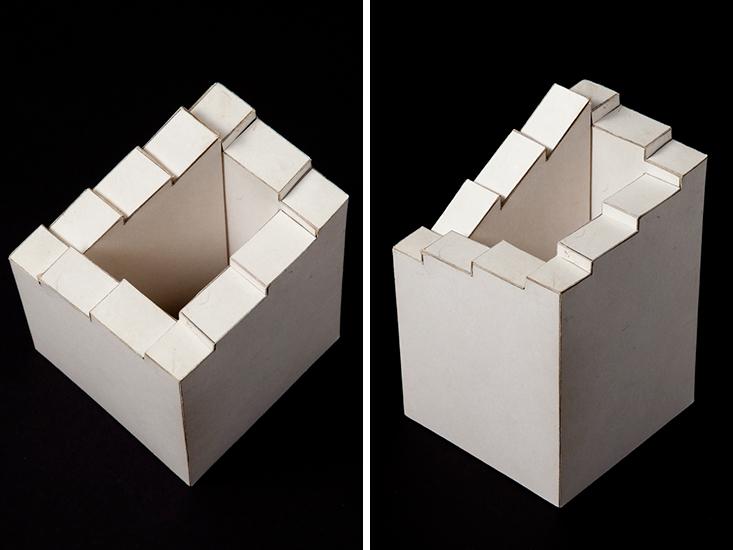A mathematician is using computers to manufacture award-winning illusions.
The man sprang onstage dressed as a miner, complete with headlamp and pickaxe. After swinging the axe a few times, he proclaimed to the audience that he had discovered a “supermagnet”—a substance so strong it could attract even wood. A video screen above him appeared to prove him right: It showed wooden balls rolling up four ramps, seemingly unbound by gravity.
The man was not in fact a miner, but a mathematician—Kokichi Sugihara, of Meiji University in Tokyo, Japan. He was competing in the 2010 finals of the annual Best Illusion of the Year Contest in Naples, Florida. And, as the video went on to show, the balls were not really rolling uphill. A look at the back of the ramp structure showed that pillars that from the front had seemed vertical were in truth anything but, and that the ramps were pointing downhill, not uphill. The demonstration (which won that year’s top prize) was an illusion, and Sugihara had designed it together with an unusual collaborator: a computer program.
Sugihara didn’t originally set out to become a master illusionist. As a young mathematician in 1980, he was interested in robot vision and computer-assisted design. With those applications in mind, he created a computer program that could take a line drawing of a polygonal shape and come up with a list of three-dimensional objects that would create that drawing when projected onto a flat plane—akin to working backward from a shadow to the possible objects that could have cast it.
To test his program, Sugihara fed it drawings of impossible-seeming objects, like M.C. Escher’s endless loop of stairs. He expected the program to reject the drawings, but to his surprise, in some cases it claimed to have found a solution: a three-dimensional object that looked just like the drawing. “I thought my software was incorrect,” Sugihara said.
On closer inspection, he realized that what was incorrect was his assumption that these “impossible” two-dimensional objects couldn’t exist in the three-dimensional world. He started making paper models of his program’s designs, and gradually, the robot and design applications fell by the wayside—his program wasn’t ideally suited to them, he discovered. Instead, he dedicated himself to exploring the strange constructions that came so easily to his program, and that appeared so baffling to human viewers. He had built an illusion machine.
Over the 34 years since then, Sugihara has used his illusion machine to create and build more than 100 illusions: impossible objects such as a solid model of Escher’s staircase, and intuition-defying motions such as balls rolling uphill. “Sugihara has come up with systematic ways of playing with what happens when the rules of the vision system fall apart,” said Arthur Shapiro, a neuroscientist at American University in Washington, D.C. Part scientist and part artist, his work is helping to elucidate the basic mathematics underlying how our brains construct our world.

...MORE